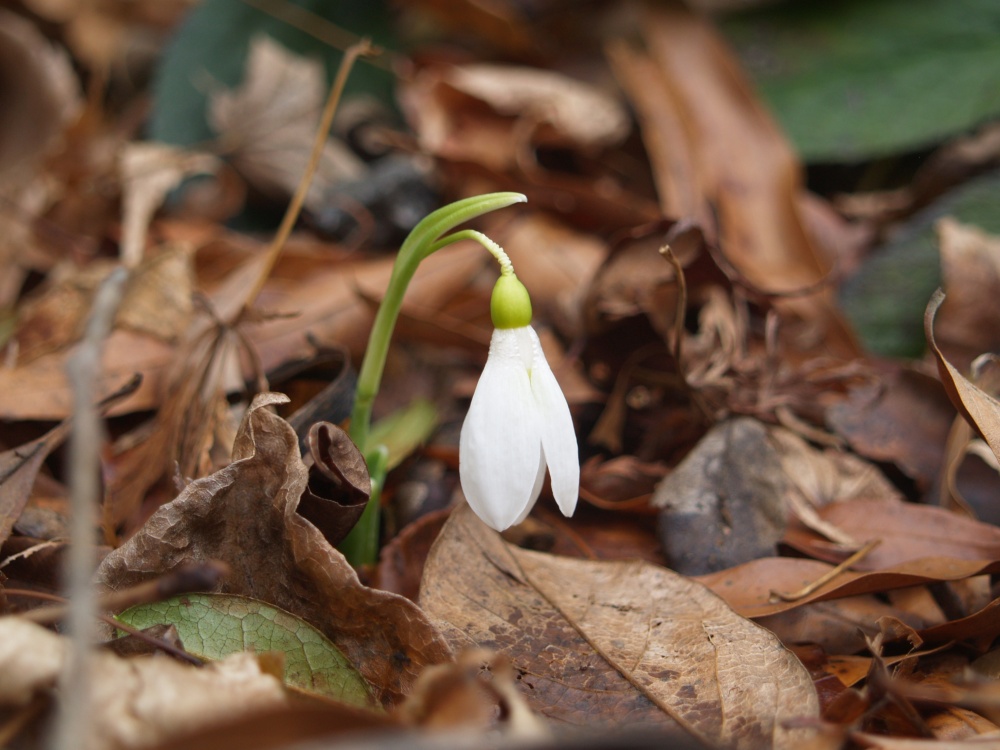I am pleased to report that recent weeks have been mild, not warm, but not cold after a period in November that alarmed many gardeners with temperatures far below normal. Rainfall has been plentiful, at least the number of days if not the total accumulation, so that the garden is damp enough to help to prevent damage if there should be a continued stretch of freezing days in the weeks ahead.

Today, I saw the first snowdrop (Galanthus, above) of the winter. This was one that was planted earlier in autumn, of the group that I knew had been planted, somewhere, but for the life of me I couldn’t recall where. So here it is, and now I remember planting this group along the driveway on the path to the rear garden.

This one is early, but I can see others nearby poking through the leaf clutter. Most often, the first signs of snowdrops in the garden are no earlier than the start of February. I don’t recall the varieties I planted, and possibly this could be one that is much earlier to flower than others. Or, it could be an anomaly resulting from a circumstance of the mild early winter temperatures, or that the small bulbs were planted late. If this variety flowers early again next year, perhaps I’ll have some insight then, but for now I’m happy to see another flower so early.
In autumn, I planted several new varieties of snowdrops, and a few other late winter blooming bulbs at the same time, though of course I cannot recall what I planted, or where. If the mild winter continues and we’re not covered by snow, then I’ll discover what was planted, and certainly I will not forget where after another year or two. Possibly.

A few days ago, as I brushed past the Katsura tree (Cercidiphyllum japonicum) I noticed seed carpels at leaf nodes along interior branches (above). I am certain that this is not remarkable to most, and certainly I would not pay these a moment’s notice if it was not winter, but this was a welcome discovery for me.
Just beyond the katsura, the branch tips of Japanese cedars (Cryptomeria japonica) are heavily laden with reproductive organs and brown cones (below) from last winter. At some point in late winter the slightest breeze will result in a fog of brown pollen. To my knowledge, this has not resulted in any viable seedlings from the six cedars, but in the absence of more gewgaws and baubles that ornament the spring garden, there remains much in early winter to capture the gardener’s attention.
